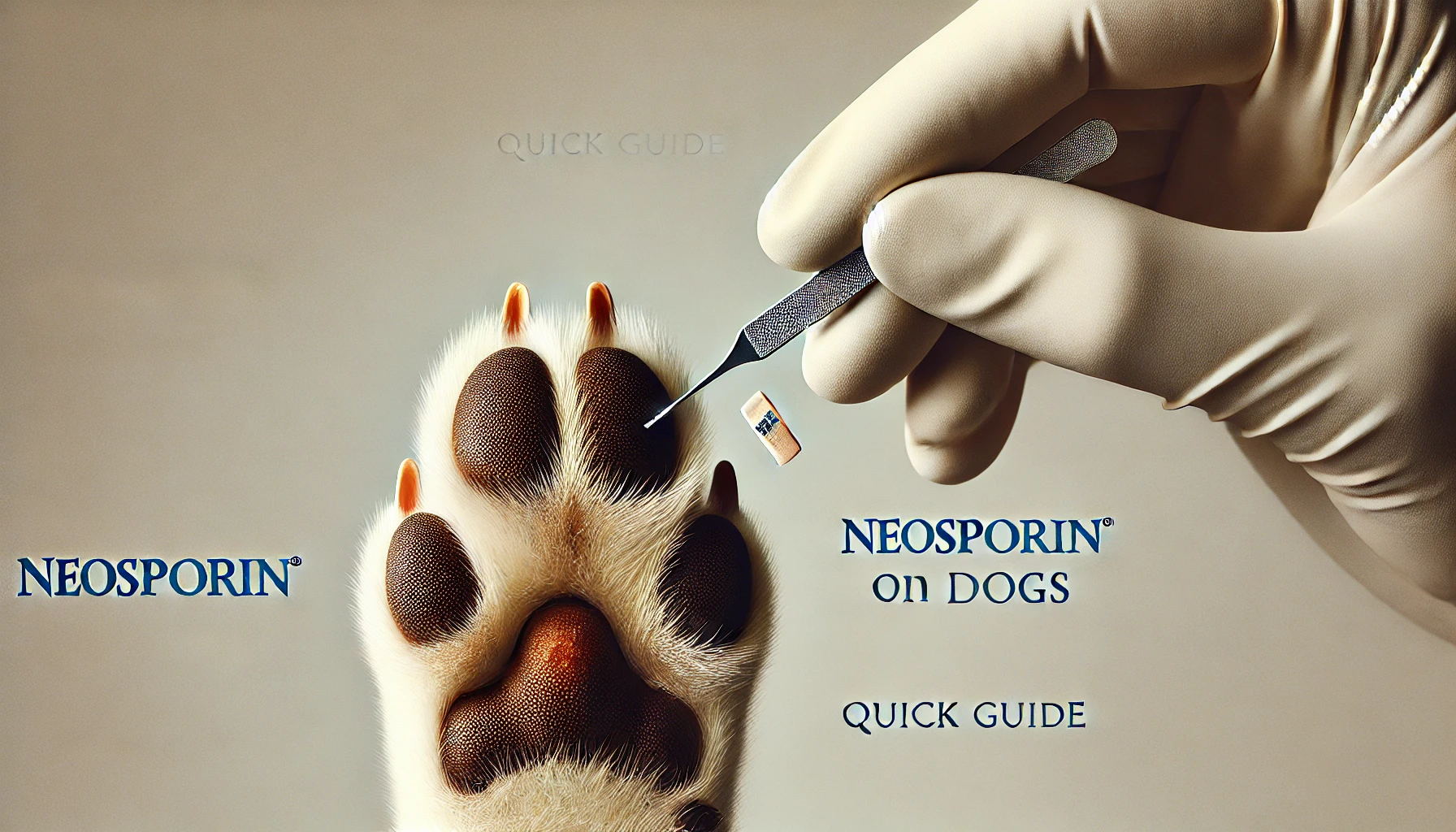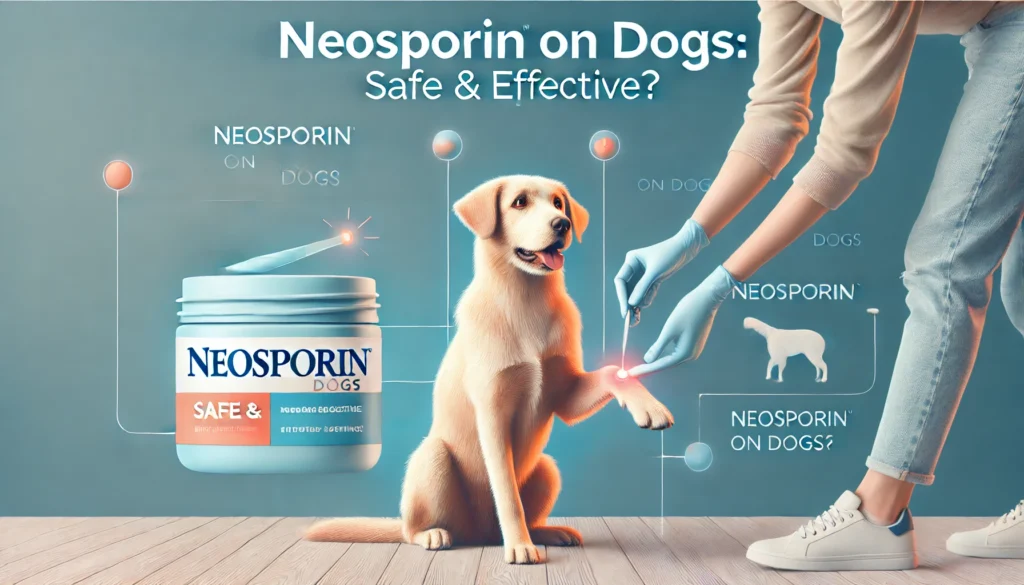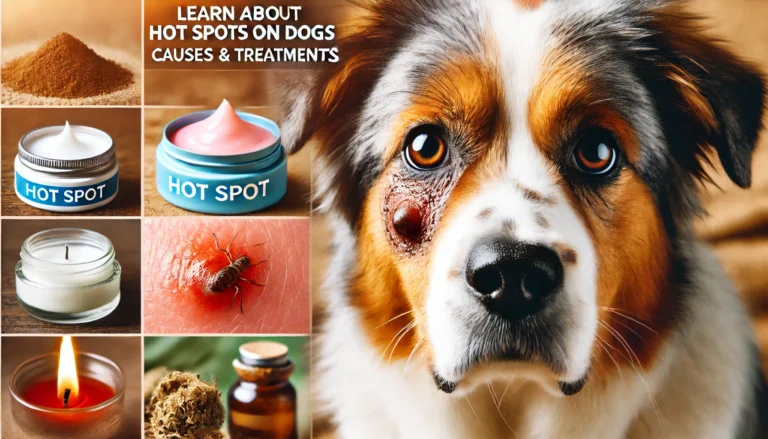can you put neosporin on a dog? know about neosporin on dogs

Neosporin on dogs is a very hot things to know. When it comes to caring for our furry companions, injuries and wounds are inevitable. Whether it’s a minor scrape from playing outside or a more significant cut from an accident, pet owners often seek effective treatments to ensure proper healing. One commonly asked question is, “Can I use Neosporin on my dog?” This article will explore the safety, uses, and application of Neosporin on dogs, providing you with the information you need to make informed decisions about your pet’s wound care.

Understanding Neosporin
Neosporin on dogs is a topical antibiotic ointment designed to prevent infections in minor cuts, scrapes, and burns. It contains three active ingredients:
- Bacitracin: An antibiotic that prevents bacterial growth.
- Neomycin: Another antibiotic that combats bacteria.
- Polymyxin B: This ingredient targets Gram-negative bacteria.
While Neosporin is safe for humans, and Neosporin on dogs raises questions regarding its efficacy and safety. Let’s delve deeper into whether it is suitable for our pets.
Is Neosporin Safe for Dogs?
Safety Considerations for neosporin on dogs
In general, neosporin on dogs is safe for treating minor wounds, but there are important factors to keep in mind:
- Ingredient Awareness: Ensure that the Neosporin formula does not contain harmful ingredients, such as pain relief components (e.g., lidocaine), which can be toxic to dogs.
- Licking: Dogs have a tendency to lick their wounds. If your dog licks the area after applying Neosporin, it can ingest the ointment, potentially leading to gastrointestinal upset.
- Allergic Reactions: Some dogs may have allergies to one or more components of Neosporin. Always observe your dog for any adverse reactions after application.
Alternatives to Neosporin
If you’re concerned about using Neosporin on dogs, consider alternatives such as:
- Bacitracin: Often considered a safe alternative, bacitracin can effectively treat minor wounds without the risk associated with Neosporin’s additional ingredients.
- Veterinary-Specific Ointments: Many veterinary ointments are specifically formulated for pets and can be a safer option.
When to Use Neosporin on Dogs
Neosporin can be applied to certain types of wounds:
Appropriate Uses of neosporin on dogs
- Minor Cuts and Scrapes: If your dog has a small cut or scrape that is clean and dry, applying a thin layer of Neosporin can help prevent infection.
- Superficial Abrasions: For areas where the skin has been scraped away, Neosporin can provide a protective barrier against bacteria.
When to Avoid Use
- Deep Wounds: Avoid using Neosporin on deep puncture wounds, severe lacerations, or large abrasions. These injuries require veterinary care.
- Infected Wounds: If the wound shows signs of infection, such as pus or significant redness, consult your veterinarian for appropriate treatment.
- Stitches or Surgical Sites: If your dog has had surgery, follow your vet’s advice on wound care and avoid using over-the-counter ointments unless directed.
dO YOU KNOW?
Finding a rash on your dog’s belly and inner thighs can be concerning, but understanding the potential causes and solutions can help you effectively manage the situation. From allergies and infections to dermatitis and skin fold issues, various factors can contribute to skin irritation. By observing symptoms, seeking veterinary care, and implementing appropriate treatments and preventative measures, you can help ensure your dog stays healthy and comfortable.
How to Apply Neosporin on Dogs
If you’ve determined that Neosporin is appropriate for your dog’s wound, follow these steps for proper application:
Step 1: Gather Your Supplies
Before you begin, ensure you have the following items:
- Neosporin Ointment: Choose the standard formula without pain relief ingredients.
- Clean Cloth or Gauze: For cleaning the wound.
- Tweezers: For removing any debris, if necessary.
- Bandages (if needed): To protect the wound after application.
Step 2: Restrain Your Dog
Make sure your dog is calm and comfortable. You may need a helper to hold your dog or use a muzzle if they are anxious or in pain.
Step 3: Clean the Wound
- Wash Your Hands: Start with clean hands to prevent introducing bacteria.
- Flush the Wound: Use saline solution or clean water to gently rinse the wound. Remove any dirt or debris using a clean cloth.
- Pat Dry: Gently dry the area with a clean cloth or gauze.
Step 4: Apply Neosporin
- Apply a Thin Layer: Squeeze a small amount of Neosporin onto your fingertip or a clean applicator and apply a thin layer directly onto the wound.
- Avoid Overapplication: Using too much ointment can lead to excessive moisture, which may hinder healing.
Step 5: Bandage the Wound (If Necessary)
If the wound is in an area where it can be bandaged:
- Cover with a Sterile Bandage: Protect the area from dirt and further injury.
- Secure the Bandage: Use tape or a self-adhering bandage, ensuring it’s snug but not too tight.
Step 6: Monitor and Prevent Licking
To prevent your dog from licking the wound:
- Use an Elizabethan Collar: Consider using a cone collar to prevent access to the treated area.
- Monitor for Licking: Keep an eye on your dog, especially in the first few hours after application.
Monitoring for Adverse Reactions of neosporin on dogs
After applying Neosporin on dogs, keep a close watch on your dog for any signs of adverse reactions, such as:
- Increased Redness or Swelling: This may indicate an allergic reaction or infection.
- Pus or Discharge: Any abnormal discharge should be noted, and veterinary assistance should be sought.
- Persistent Licking: If your dog continues to lick the area, it may require additional protective measures.
dO YOU KNOW?
When we say a pet is Pet euthanasia or Euthanized Pets, it means that a veterinarian has administered a sedative followed by a drug that induces death.
When to Consult a Veterinarian
You should seek veterinary care if:
- The wound is deep or does not stop bleeding.
- There are signs of infection, such as pus or excessive swelling.
- Your dog is experiencing significant pain or discomfort.
- The wound does not show signs of improvement within a few days.
Conclusion of neosporin on dogs
Using Neosporin on dogs can be an effective way to treat minor wounds, provided you follow the proper guidelines and precautions. Always assess the severity of the wound and consider alternatives if you have concerns about using Neosporin. If you ever find yourself asking, “Can I put Neosporin on my dog?” or “Is Neosporin safe for dogs?” remember to consult with your veterinarian for the best advice tailored to your pet’s specific needs. With the right care and attention, you can help your dog heal and return to their happy, active self.
How can I disinfect my dog’s wound at home?
Clean the wound with saline solution or mild antiseptic like chlorhexidine, then gently pat dry.
What’s the best thing to put on a dog’s wound?
A thin layer of a pet-safe antibiotic ointment like Neosporin (without pain relief additives) or vet-prescribed ointment.
What is the best antiseptic for dogs?
Chlorhexidine is widely recommended due to its effectiveness and safety for pets.
Can human Neosporin be used on dogs?
Yes, human Neosporin can be used on dogs for minor cuts and scrapes, but avoid formulas with pain relievers.
Can I put Neosporin on my dog’s irritated skin?
Yes, for minor irritations and wounds, Neosporin can help prevent infection, unless your dog is allergic to it.
What ointments are safe for dogs?
Safe ointments include Neosporin, Bacitracin, and hydrocortisone (for itch relief). Always confirm with a vet first.
Can I put hydrogen peroxide on my dog’s wound?
It’s not recommended as it can damage the tissue and delay healing. Use it only to clean heavily soiled wounds before vet treatment.
Does a dog wound heal faster, covered or uncovered?
It depends on the wound. Covered wounds are protected from bacteria and debris, but some air exposure can be beneficial for drying out some types of wounds.
Does vinegar heal dog wounds?
Vinegar is not recommended for treating wounds as it can irritate the skin and slow healing.
What is the strongest natural antibiotic for dogs?
Honey, particularly Manuka honey, is known for its strong antibacterial properties and can be used on wounds under veterinary guidance.






